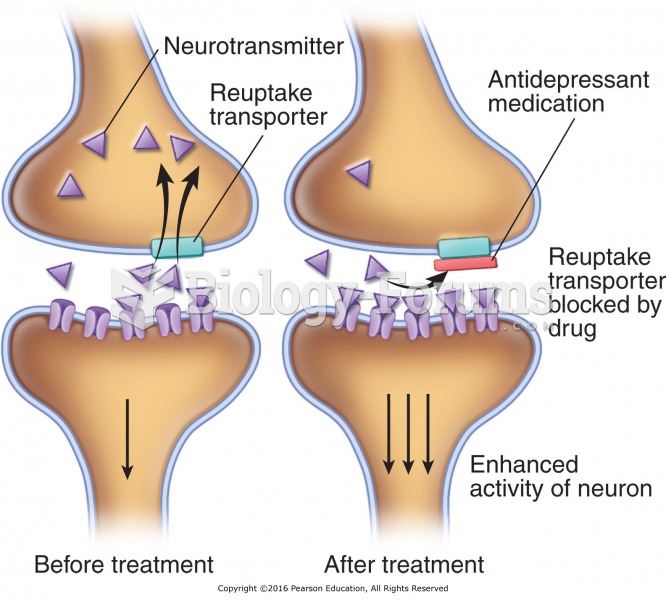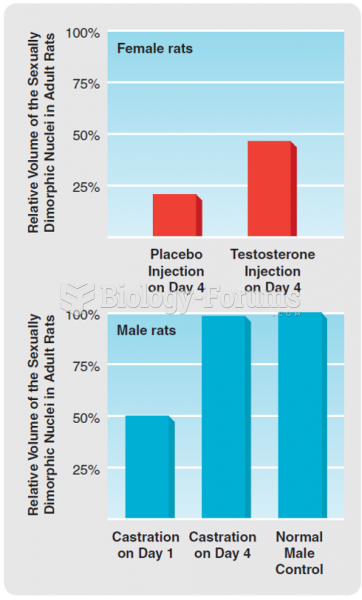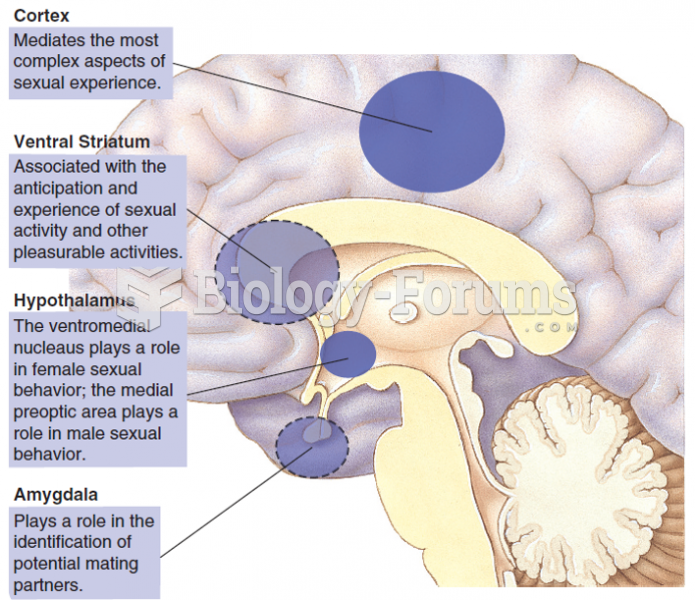|
|
|
The most common childhood diseases include croup, chickenpox, ear infections, flu, pneumonia, ringworm, respiratory syncytial virus, scabies, head lice, and asthma.
Many people have small pouches in their colons that bulge outward through weak spots. Each pouch is called a diverticulum. About 10% of Americans older than age 40 years have diverticulosis, which, when the pouches become infected or inflamed, is called diverticulitis. The main cause of diverticular disease is a low-fiber diet.
Street names for barbiturates include reds, red devils, yellow jackets, blue heavens, Christmas trees, and rainbows. They are commonly referred to as downers.
In most climates, 8 to 10 glasses of water per day is recommended for adults. The best indicator for adequate fluid intake is frequent, clear urination.
Asthma occurs in one in 11 children and in one in 12 adults. African Americans and Latinos have a higher risk for developing asthma than other groups.
 Mechanisms of action of antidepressants: (a) In adrenergic and serotonergic neurons the activity of ...
Mechanisms of action of antidepressants: (a) In adrenergic and serotonergic neurons the activity of ...
 The effects of neonatal testosterone exposure on the size of the sexually dimorphic nuclei in male ...
The effects of neonatal testosterone exposure on the size of the sexually dimorphic nuclei in male ...





